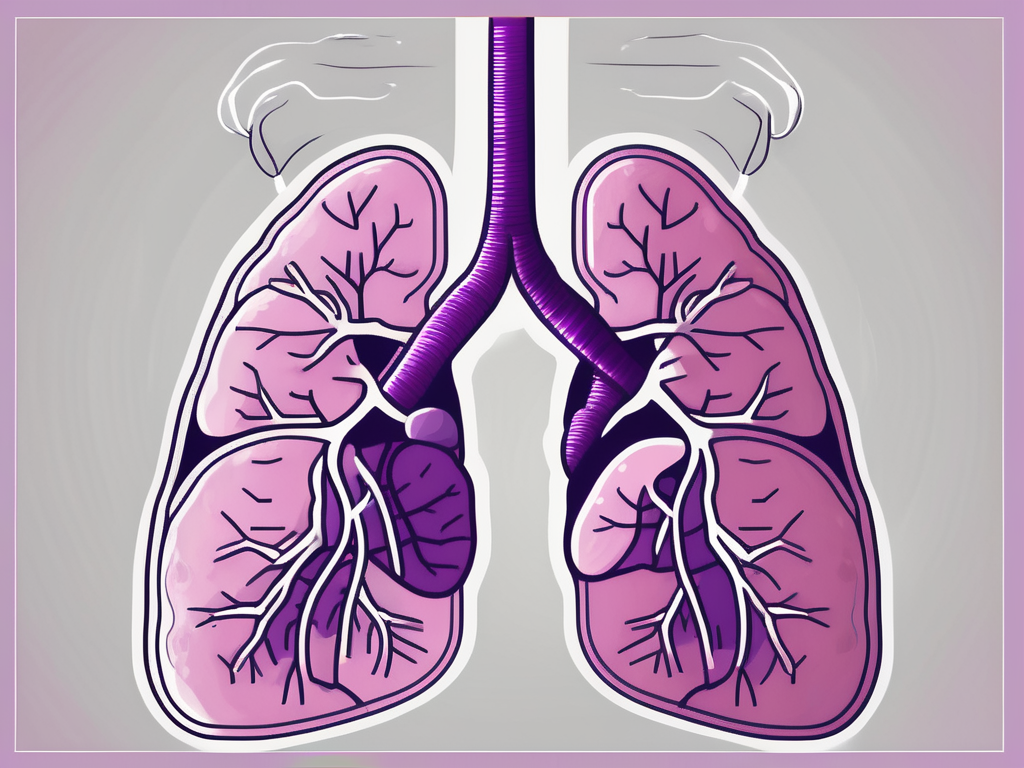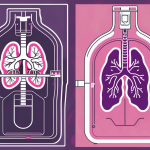Lung cancer isn’t exclusive to smokers; non-smokers are also at risk, emphasizing the need to debunk myths surrounding the disease. This article highlights the importance of recognizing lung cancer risk factors in non-smokers, such as secondhand smoke, environmental pollutants like radon and asbestos, and genetic predispositions. It stresses the significance of early detection, which can dramatically improve treatment outcomes, and explores advanced treatment options tailored for non-smokers, including targeted therapies and immunotherapy. The piece advocates for increased awareness and prevention, urging non-smokers to be vigilant about lung health, undergo regular screenings, and minimize exposure to known risk factors. Through education and proactive healthcare, the article aims to enhance early detection, effective treatment, and ultimately, prevention of lung cancer in non-smokers, fostering a broader understanding of the disease’s reach beyond the smoking population.
Lung cancer is often thought to be a disease that only affects those who smoke. However, this is a dangerous misconception that needs to be debunked. Non-smokers can and do develop lung cancer, and it is important for everyone to understand the risk factors associated with this condition. By increasing awareness and knowledge about non-smoker lung cancer, we can work towards early detection, effective treatment, and ultimately, prevention.
Understanding the Risk Factors of Non-Smokers Developing Lung Cancer
While smoking is the leading cause of lung cancer, there are other risk factors that can contribute to the development of the disease in non-smokers. Exposure to secondhand smoke is a significant risk factor, as the harmful toxins from cigarettes can still be inhaled by those who are around smokers regularly.
Secondhand smoke is a complex mixture of over 7,000 chemicals, including more than 70 known to cause cancer. When non-smokers are exposed to secondhand smoke, they inhale these toxic substances, which can damage their lung tissue and increase the risk of developing lung cancer. It is estimated that secondhand smoke causes approximately 7,330 deaths from lung cancer each year in the United States alone.
Occupational hazards also pose a threat to non-smokers when it comes to lung cancer. Exposure to asbestos, a naturally occurring mineral used in various industries, is a well-known risk factor for lung cancer. Asbestos fibers, when inhaled, can cause inflammation and scarring in the lungs, leading to the development of cancer over time. Similarly, radon, a radioactive gas that can be found in homes and workplaces, is another significant occupational hazard. Prolonged exposure to high levels of radon can increase the risk of lung cancer in non-smokers.
It is worth noting that not all non-smokers who develop lung cancer have been exposed to secondhand smoke or occupational hazards. Genetic factors can also play a role in the development of lung cancer in individuals who have never smoked. Certain genetic mutations, such as alterations in the EGFR gene, have been found to increase the susceptibility to lung cancer in non-smokers. These genetic changes can affect the way cells grow and divide, leading to the formation of tumors in the lungs.
While the risk of lung cancer in non-smokers is generally lower than in smokers, it is essential to be aware of these risk factors and take necessary precautions to reduce the risk. Avoiding exposure to secondhand smoke by staying in smoke-free environments and encouraging others to quit smoking can significantly lower the chances of developing lung cancer. It is also crucial to be mindful of potential occupational hazards and take appropriate safety measures to minimize exposure to harmful substances.
Regular check-ups and screenings can help detect lung cancer at an early stage, increasing the chances of successful treatment. If you are a non-smoker and have concerns about your lung health, it is advisable to consult with a healthcare professional who can provide personalized guidance and recommend appropriate preventive measures.
Debunking the Myth: Lung Cancer Can Affect Non-Smokers Too
One common misconception is that only smokers can get lung cancer. This is simply not true. Lung cancer can affect anyone, regardless of their smoking history. In fact, approximately 10-15% of lung cancer cases occur in people who have never smoked. It is crucial to dispel this myth and raise awareness about the fact that non-smokers can also be susceptible to lung cancer. By doing so, we can ensure that non-smokers receive the necessary support, care, and resources in their battle against this devastating disease.
Exploring the Hidden Causes: Environmental Factors and Non-Smoker Lung Cancer
In addition to secondhand smoke exposure, there are other environmental factors that can contribute to the development of lung cancer in non-smokers. Exposure to air pollution in heavily industrialized areas has been linked to an increased risk of lung cancer. Radon, a naturally occurring radioactive gas that can seep into homes, is another hidden danger that non-smokers need to be aware of. By understanding these environmental causes, we can take steps to minimize our exposure and protect ourselves from the risk of developing lung cancer.
The Role of Genetics in Non-Smoker Lung Cancer: Unraveling the Genetic Puzzle
Research has shown that certain genetic factors can increase an individual’s susceptibility to lung cancer, even in the absence of smoking. Family history of lung cancer, certain genetic mutations, and inherited predispositions are some of the factors that can play a role in non-smokers developing this disease. Genetic testing and counseling can provide valuable insights and help individuals make informed decisions regarding their health. By unraveling the genetic puzzle of non-smoker lung cancer, we can pave the way for targeted treatments and personalized care.
Early Detection of Lung Cancer in Non-Smokers: Signs and Symptoms to Watch For
Early detection is crucial in improving the prognosis and outcomes for individuals with lung cancer. Non-smokers need to be aware of the signs and symptoms that may indicate the presence of the disease. Persistent cough, chest pain, difficulty breathing, unexplained weight loss, and recurrent respiratory infections are all potential warning signs of lung cancer. It is important not to ignore these symptoms and to seek medical attention promptly. By catching lung cancer in its early stages, we can significantly increase the chances of successful treatment and recovery.
Treatment Options for Non-Smoker Lung Cancer: Breaking New Ground
The treatment landscape for non-smoker lung cancer has seen significant advancements in recent years. Targeted therapies, which specifically attack cancer cells based on their genetic makeup, have shown promising results in improving outcomes for non-smokers with lung cancer. In addition to surgery, radiation therapy, and chemotherapy, immunotherapy is revolutionizing the way we treat lung cancer. By harnessing the power of the body’s immune system, immunotherapy helps to fight cancer cells more effectively. It is essential for patients and healthcare providers to stay informed about the latest treatment options available to non-smokers with lung cancer.
Living with Non-Smoker Lung Cancer: Coping Strategies and Support
A diagnosis of lung cancer can be overwhelming, regardless of smoking history. Non-smokers facing this challenge often require emotional support and coping strategies to navigate their journey. Support groups, counseling, and therapy can provide a safe space for individuals to share their experiences and seek guidance from others who are facing similar circumstances. Additionally, family and friends play a crucial role in providing a support system for non-smokers with lung cancer. By acknowledging the emotional impact of the disease and seeking the necessary support, individuals can find strength and resilience in their battle against lung cancer.
The Rise of Non-Smoker Lung Cancer: Trends and Statistics
The incidence of lung cancer in non-smokers has been on the rise in recent years. This alarming trend highlights the need for increased awareness and research into the causes and treatments for non-smoker lung cancer. By studying the patterns and understanding the underlying factors contributing to this rise, we can work towards implementing preventive measures and raising public health initiatives to combat the increasing incidence of lung cancer in non-smokers.
Prevention is Key: Promoting Lung Health in Non-Smokers
While the risk of developing lung cancer cannot be completely eliminated, there are steps non-smokers can take to reduce their risk. Avoiding exposure to secondhand smoke, minimizing exposure to environmental pollutants, and regularly testing homes for radon are essential preventive measures. Furthermore, adopting a healthy lifestyle, including regular exercise, a balanced diet, and stress management, can help promote lung health in non-smokers. By prioritizing prevention, we can reduce both the incidence and impact of lung cancer in non-smokers, ultimately improving the overall health and well-being of individuals and communities.
In conclusion, lung cancer is not limited to smokers. Non-smokers are also at risk of developing this disease due to various factors such as secondhand smoke, environmental exposure, and genetics. It is crucial to raise awareness, debunk myths, and provide support for non-smokers with lung cancer. By understanding the risk factors, early detection, exploring treatment options, and promoting prevention, we can make significant strides in improving outcomes and empowering non-smokers affected by lung cancer. Together, we can make a difference in the fight against lung cancer in people who have never smoked.


